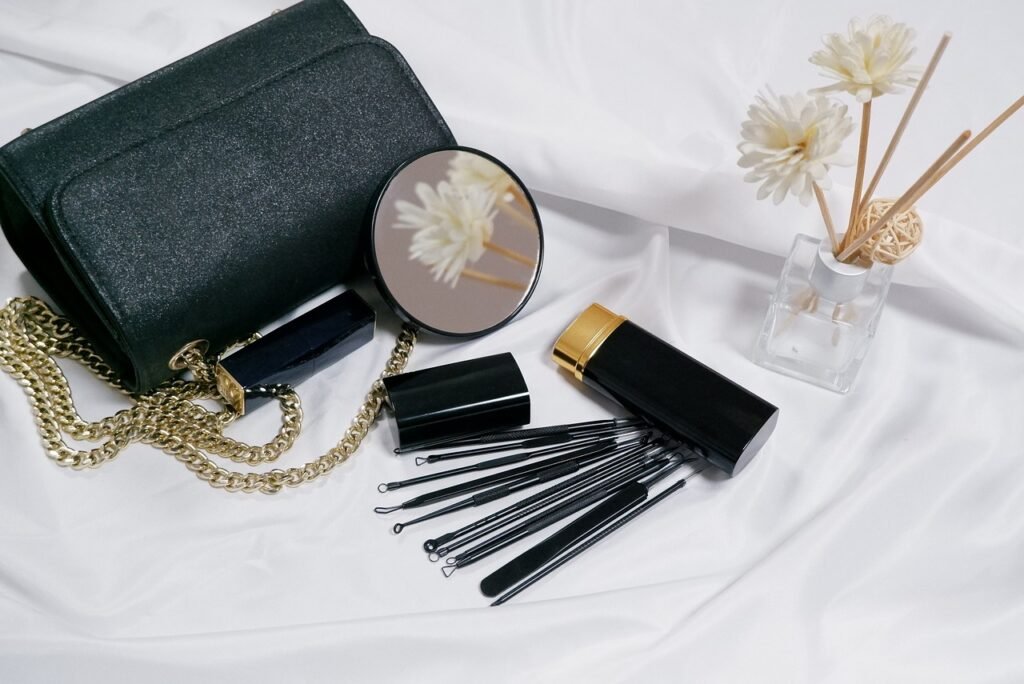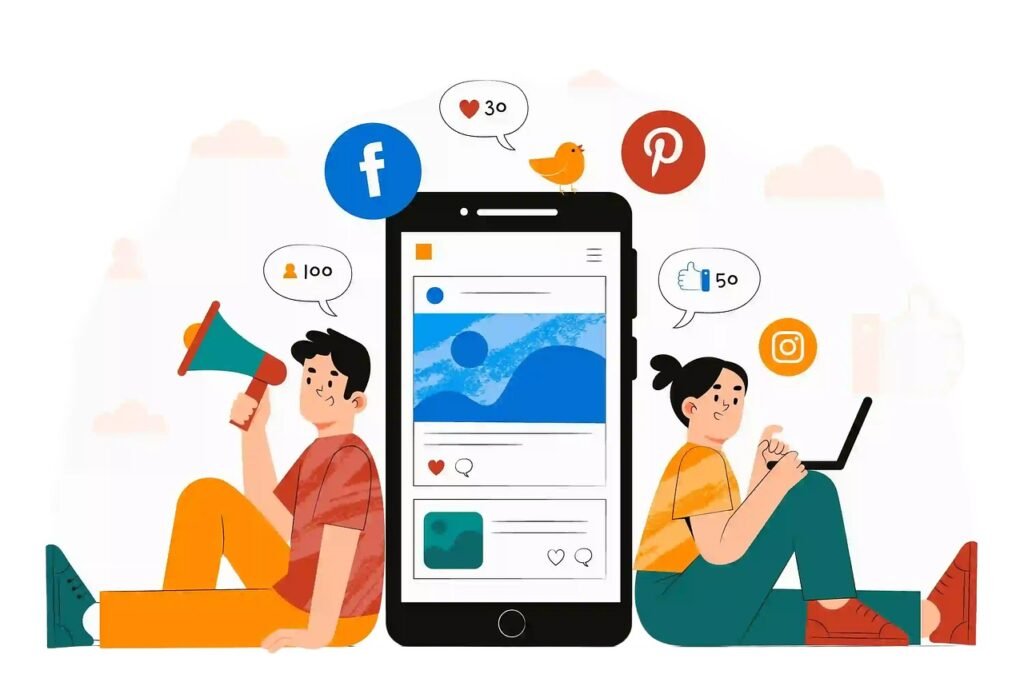This Article has been revised, edited and added to, by Poulomi Chakraborty.
- Why Beauty and Cosmetics?
- Crafting Your Beauty Brand
- Find Your Niche
- Be Consistent
- Engage With Your Audience
- Defining Your Unique Value Proposition
- Storytelling as a Branding Tool
- Visual Branding and Aesthetics
- Building a Content Strategy
- Leveraging Influencer Collaborations
- Utilizing Data and Analytics
- Engaging with Your Audience
- Maintaining Consistency Across Channels
- Investing in Professional Development
- Establishing Partnerships with Beauty Brands
- Build Your Presence
- Reach Out
- Use Affiliate Networks
- Crafting a Compelling Brand Narrative
- Demonstrating Engagement and Influence
- Creating Targeted Outreach Campaigns
- Showcasing Multi-Platform Presence
- Building Long-Term Relationships
- Leveraging Networking Opportunities
- Utilizing Affiliate Networks Effectively
- Showcasing Authentic Testimonials and Reviews
- Negotiating Win-Win Partnerships
- Creating Content that Converts
- Product Reviews
- Tutorials and How-To Guides
- Before and After Shots
- Listicles
- Utilize SEO
- Understanding Your Audience’s Needs
- Crafting Engaging and Educational Content
- Utilizing Emotional Storytelling
- Leveraging User-Generated Content
- Implementing Interactive Elements
- Optimizing Content for Different Platforms
- Incorporating Strong Calls-to-Action
- Utilizing Data-Driven Insights
- Building Trust Through Transparency
- Consistency and Frequency of Content
- Leveraging Social Media for Beauty Affiliate Marketing
- Instagram: A Beauty Hub
- TikTok: Where Trends Go Viral
- YouTube: The Tutorial Treasure Trove
- Maximizing Instagram for Visual Storytelling
- Harnessing the Power of TikTok Trends
- Creating In-Depth Content on YouTube
- Building a Community on Facebook
- Engaging through Twitter Conversations
- Utilizing Pinterest for Visual Discovery
- Analyzing and Adapting Your Social Media Strategy
- Collaborating with Influencers
- Integrating Social Proof and User-Generated Content
- Nurturing Trust and Authenticity
- Be Selective with What You Promote
- Transparency is Key
- Share Personal Stories
- Building a Genuine Brand Voice
- Authentic Product Endorsements
- Transparent Disclosure Practices
- Prioritizing Quality Over Quantity
- Engaging with Your Community
- Continuous Learning and Adaptation
- Addressing Negative Feedback Constructively
- Cultivating Long-Term Relationships with Brands
- Leveraging Customer Testimonials
- Demonstrating Ethical Practices
- Final Thoughts: Ethics and Longevity in Beauty Affiliate Marketing
In the beauty industry, where trust and personal testimony are as crucial as the ingredients list, affiliate marketing thrives. Consumers are looking for authentic experiences and real results, and who better to provide that than someone who has tried and tested the products?
Here’s how you can do it best, by integrating it into your affiliate marketing campaign.
Why Beauty and Cosmetics?

Beauty and cosmetics are not just about looking good; they’re about feeling good. In a world that’s increasingly focused on self-care and wellness, these products offer users a way to care for their skin, express their personality, and boost their confidence.
It’s an industry that’s deeply personal, and that’s what makes it perfect for affiliate marketing. Personal endorsements have more weight here than in almost any other market.
Moreover, the beauty industry is lucrative. Valued at hundreds of billions of dollars globally, there’s a significant pie that affiliate marketers can get a slice of. From luxury brands to indie labels, the diversity of products means there’s something for every niche and every audience.
Building Your Affiliate Empire in Beauty
To carve out your own empire in the beauty affiliate market, you need to build a platform and a brand that resonates with your audience. Whether you’re on Instagram showing off makeup tutorials, blogging about the latest Korean skincare trend, or creating YouTube videos on natural hair care, you need to provide value to your followers.
Here’s a hint before we dive deeper: authenticity is your best friend in the beauty industry. Your audience wants to trust your opinions, so being genuine about the products you promote is key to success.
Let’s embark on this glamorous journey and explore how you can promote beauty and self-care products through affiliate marketing effectively. You’ll learn how to connect with brands, create content that converts, and nurture an audience that is eager to try out your recommendations.
Understanding Consumer Psychology in Beauty
The key to thriving in the beauty and cosmetics affiliate market lies in understanding consumer psychology. Consumers in this industry are not just buying products; they are investing in experiences and emotions. Startups should focus on the emotional appeal of their products.
Highlighting how a product can enhance a user’s self-esteem or provide a sense of indulgence can be more persuasive than simply listing its features. For instance, promoting a skincare product as a luxurious daily ritual rather than just a routine can resonate deeply with potential buyers.
Leveraging Trends and Innovations
Staying ahead of trends is crucial in the beauty industry, which is constantly evolving with new products, techniques, and technologies. Startup founders should keep a close eye on emerging trends and be quick to integrate these into their affiliate marketing strategies.
This might include new skincare ingredients, innovative application methods, or trending beauty routines. By positioning your affiliate marketing efforts around these trends, you can capture the interest of early adopters and trend-conscious consumers.
Innovations in beauty technology, such as virtual try-on tools and personalized skincare solutions, are also transforming the market. Partnering with brands that offer these cutting-edge features can set your affiliate marketing campaign apart.
Demonstrating these technologies in your content not only attracts tech-savvy consumers but also enhances the perceived value of the products you are promoting.
Building Trust Through Transparency
In an industry where trust is paramount, transparency can be a powerful tool. Startups should encourage their affiliate marketers to be transparent about product ingredients, sourcing practices, and ethical standards.
Consumers are increasingly concerned about the sustainability and ethical implications of their purchases. Highlighting these aspects can differentiate your brand in a crowded market. Detailed content that educates consumers on the benefits and safety of the ingredients used in the products can build credibility and trust.
Creating a Multi-Platform Strategy
A multi-platform strategy is essential for reaching diverse consumer segments in the beauty industry. Each social media platform offers unique advantages that can be leveraged to maximize your reach and engagement.
On Instagram, visually stunning images and short, engaging videos can captivate your audience. YouTube provides a platform for in-depth tutorials and reviews, while TikTok’s viral trends can create rapid awareness and interest in new products.
Startups should also consider newer platforms and emerging technologies, such as augmented reality (AR) and virtual reality (VR), which are becoming increasingly popular in the beauty space. AR applications, for example, allow consumers to virtually try on makeup, providing an interactive and personalized experience that can significantly boost conversion rates.
Strategic Brand Partnerships
Forming strategic partnerships with reputable beauty brands can amplify your affiliate marketing efforts. Startups should focus on building relationships with brands that align with their values and audience preferences.
Collaborations can take various forms, from co-branded content to exclusive product launches. These partnerships not only enhance your credibility but also provide access to a wider audience.
Engaging in collaborative campaigns, such as joint giveaways or limited edition product lines, can create buzz and drive traffic. Additionally, negotiating higher commission rates or exclusive affiliate deals with brands can increase your revenue potential and provide your audience with unique value propositions.
Fostering Community and Engagement
Creating a sense of community around your brand is vital for long-term success in the beauty industry. Encourage your affiliate marketers to engage with their followers regularly, responding to comments, hosting live Q&A sessions, and seeking feedback. This two-way communication fosters loyalty and trust, making your audience more likely to act on your recommendations.
Building a community also involves encouraging user-generated content. This can include customer reviews, testimonials, and social media posts featuring your products. Highlighting these authentic experiences can enhance your credibility and provide social proof, which is a powerful motivator for potential buyers.
Continuous Learning and Adaptation
The beauty industry is dynamic, with consumer preferences and trends shifting rapidly. Startups should prioritize continuous learning and adaptation to stay competitive. Regularly analyze the performance of your affiliate marketing campaigns to identify what works and what doesn’t. Utilize data analytics to gain insights into consumer behavior and preferences, allowing you to refine your strategies accordingly.
Investing in ongoing education for your affiliate marketers can also pay dividends. Providing them with resources and training on the latest industry trends, marketing techniques, and product knowledge ensures they remain effective and credible advocates for your brand.

Related: Check out our free SEO suite

Crafting Your Beauty Brand
Before you can start promoting products, you need to establish yourself as a beauty authority. This doesn’t mean you have to be a makeup artist or esthetician, though those credentials certainly don’t hurt. It means you need to create a brand that is trustworthy, relatable, and consistent.
Find Your Niche
The beauty industry is vast, so to stand out, you should carve out a niche for yourself. Maybe you’re the go-to resource for vegan cosmetics, or perhaps you specialize in budget-friendly skincare. Your niche should reflect your genuine interests, as this passion will shine through in your content.
Be Consistent
Consistency is key in affiliate marketing. This applies to the frequency of your posts, the quality of your content, and even the look and feel of your brand. Whether it’s a signature color scheme or a type of post you do every Tuesday, give your followers something to remember and look forward to.
Engage With Your Audience
Building a community is crucial. Respond to comments, ask your followers for their opinions, and engage with their content as well. Showing that you’re an active and involved member of the beauty community helps build trust and loyalty.
Defining Your Unique Value Proposition
To stand out in the competitive beauty industry, your brand must have a clear and compelling unique value proposition (UVP). This is what differentiates you from others in the market. Your UVP should articulate the specific benefits your audience will gain from engaging with your content.
For example, if your focus is on clean beauty, emphasize your commitment to promoting products free from harmful chemicals. If you are an expert in makeup for mature skin, highlight your expertise and experience in this niche.
Clearly defining your UVP will help you attract a dedicated audience and position yourself as a go-to resource in your chosen area.
Storytelling as a Branding Tool
Storytelling is a powerful tool in building your beauty brand. Share your journey, experiences, and the passion that drives your love for beauty and cosmetics. Authentic stories resonate with audiences and create an emotional connection, which is crucial in the beauty industry.
Whether it’s the story of how you discovered your favorite skincare routine or a personal struggle with finding the right products, these narratives can humanize your brand and make it more relatable. Incorporate these stories into your blog posts, social media updates, and video content to engage your audience on a deeper level.
Visual Branding and Aesthetics
In the beauty industry, visual appeal is paramount. Your brand’s visual identity should reflect the quality and style of the products you promote. Invest in high-quality photography and design elements that align with your brand’s aesthetic.
Consistent use of colors, fonts, and imagery will help create a cohesive and recognizable brand image. Consider creating a mood board that captures the essence of your brand and use it as a guide for all your visual content. High-quality visuals not only attract attention but also convey professionalism and reliability.
Building a Content Strategy
A well-planned content strategy is essential for establishing your beauty brand. Develop a content calendar that outlines the types of content you will create, the platforms you will use, and the frequency of your posts.
Your content should be a mix of educational, entertaining, and promotional material. For instance, you can post tutorials, product reviews, industry news, and behind-the-scenes looks at your daily routine.
Regularly publishing high-quality content will keep your audience engaged and position you as a knowledgeable and reliable source in the beauty industry.
Leveraging Influencer Collaborations
Collaborating with influencers can significantly boost your brand’s visibility and credibility. Partner with influencers who align with your brand values and have a genuine interest in your niche. These collaborations can take many forms, including guest blog posts, joint social media campaigns, and co-hosted events or webinars.
Influencer collaborations not only expand your reach but also add a layer of authenticity to your brand, as influencers bring their loyal followers who trust their recommendations. Approach influencers with a well-thought-out proposal that outlines the mutual benefits of the collaboration.
Utilizing Data and Analytics
Data and analytics are invaluable in refining your branding strategy. Use analytics tools to track the performance of your content and understand your audience’s behavior. Identify which types of content receive the most engagement and adjust your strategy accordingly.
For example, if you notice that your audience prefers video tutorials over blog posts, allocate more resources to creating video content. Regularly review your analytics to make data-driven decisions that enhance your brand’s effectiveness and reach.
Engaging with Your Audience
Building a community around your brand is crucial for long-term success. Engage with your audience by responding to comments, messages, and feedback promptly. Encourage discussions and ask for opinions to make your followers feel valued and heard.
Hosting live sessions, Q&As, and interactive polls can also foster a sense of community and loyalty. By actively engaging with your audience, you not only build trust but also gain valuable insights into their preferences and needs, which can inform your future content and product recommendations.
Maintaining Consistency Across Channels
Consistency across all your marketing channels reinforces your brand identity. Ensure that your messaging, tone, and visual elements are uniform across your website, social media platforms, email newsletters, and any other channels you use.
This uniformity helps in creating a strong and memorable brand image. For example, if your brand voice is friendly and approachable, maintain this tone in all your communications, whether it’s a blog post, an Instagram caption, or an email update.
Consistency builds recognition and trust, making your audience more likely to engage with and recommend your brand.
Investing in Professional Development
The beauty industry is continuously evolving, with new trends, products, and techniques emerging regularly. Invest in your professional development to stay ahead of the curve. Attend industry conferences, enroll in courses, and participate in webinars to enhance your knowledge and skills.
Staying updated with the latest industry developments enables you to provide your audience with the most current and relevant information. It also positions you as an authority who is committed to ongoing learning and excellence.
Establishing Partnerships with Beauty Brands

Once you’ve got your brand established, it’s time to start forming partnerships with beauty companies. But how do you get brands to notice you?
Build Your Presence
The first step is to have an audience. Brands are more likely to work with you if they see that you have a following that engages with your content. Focus on growing your social media platforms or blog readership.
Reach Out
Don’t be afraid to reach out to brands you love. A well-crafted email that demonstrates your knowledge of and passion for their products can go a long way. Be sure to include your media kit with stats about your audience demographics and engagement rates.
Use Affiliate Networks
Affiliate networks are platforms where you can find products to promote and earn commissions. They’re a great way to find beauty brands that are looking for affiliates. Some popular networks include ShareASale, Commission Junction, and Rakuten Advertising.
Crafting a Compelling Brand Narrative
To attract beauty brands, your first step is to craft a compelling brand narrative. This narrative should clearly articulate your brand’s mission, values, and the unique perspective you bring to the beauty industry.
When brands understand your story and how it aligns with their own values, they are more likely to see the potential for a fruitful partnership. Highlight your journey, your commitment to quality and authenticity, and your passion for the beauty industry.
This narrative should be consistently communicated across all your platforms, from your website to your social media channels, creating a cohesive and engaging brand identity that appeals to potential partners.
Demonstrating Engagement and Influence
Beauty brands look for partners who have a strong, engaged audience. Demonstrate your influence by showcasing your engagement metrics, such as likes, comments, shares, and the level of interaction you have with your followers. Share case studies of successful campaigns you’ve run in the past, highlighting the results and impact.
If you’re just starting out, focus on creating high-quality content that encourages interaction and building a community around your brand. Brands value authentic engagement over sheer numbers, so nurturing a loyal and interactive audience can be more attractive than having a large but passive following.
Creating Targeted Outreach Campaigns
Strategic outreach is essential in establishing partnerships with beauty brands. Develop a targeted outreach campaign where you identify and approach brands that align with your values and audience. Conduct thorough research to understand the brand’s products, values, and marketing strategies.
Tailor your pitch to each brand, emphasizing how your audience aligns with their target market and how your partnership can benefit them. Include specific examples of how you plan to promote their products and the value you bring to the table.
Personalized pitches show that you’ve done your homework and are genuinely interested in a mutually beneficial partnership.
Showcasing Multi-Platform Presence
Highlighting your multi-platform presence can significantly enhance your appeal to beauty brands. Showcase your ability to create engaging content across various platforms such as Instagram, YouTube, TikTok, and blogs.
Each platform offers unique advantages, and demonstrating your proficiency in leveraging these can make you a more attractive partner. For instance, Instagram is great for high-quality images and short videos, YouTube for detailed tutorials and reviews, and TikTok for quick, viral content.
By showing your versatility and ability to engage audiences on different platforms, you position yourself as a comprehensive partner capable of maximizing brand visibility and engagement.
Building Long-Term Relationships
Focus on building long-term relationships rather than one-off collaborations. Brands appreciate partners who are committed to growing together over time. Start by working on smaller projects to establish trust and demonstrate your capabilities. Deliver exceptional results and consistently meet or exceed expectations.
Communicate regularly with your brand partners to discuss performance, share feedback, and explore new opportunities for collaboration. Long-term partnerships often lead to more lucrative opportunities, such as exclusive deals, higher commission rates, and deeper involvement in brand campaigns.
Leveraging Networking Opportunities
Networking plays a crucial role in establishing partnerships with beauty brands. Attend industry events, conferences, and trade shows to connect with brand representatives and other influencers. Participate in online forums, webinars, and social media groups dedicated to the beauty industry.
Building a strong professional network can open doors to partnership opportunities and provide valuable insights into industry trends. Don’t underestimate the power of word-of-mouth recommendations; a positive reputation within the industry can lead to brands seeking you out for collaborations.
Utilizing Affiliate Networks Effectively
Affiliate networks can be a valuable resource for finding partnership opportunities. Join reputable networks like ShareASale, Commission Junction, and Rakuten Advertising to connect with beauty brands looking for affiliates.
These platforms often provide tools and resources to help you manage your campaigns and track performance. When joining an affiliate network, make sure to optimize your profile to highlight your strengths and successes. Actively participate in network forums and webinars to stay informed about new opportunities and best practices.
Showcasing Authentic Testimonials and Reviews
One of the most effective ways to establish credibility with beauty brands is by showcasing authentic testimonials and reviews from your audience. Encourage your followers to share their experiences with the products you recommend and feature these testimonials on your platforms.
Genuine feedback from real users can significantly enhance your credibility and demonstrate the trust your audience places in your recommendations. Brands are more likely to partner with influencers who can provide real, positive feedback from their community.
Negotiating Win-Win Partnerships
Negotiation is a critical skill in establishing partnerships with beauty brands. Approach negotiations with a clear understanding of your value and the benefits you bring to the table. Be prepared to discuss your rates, deliverables, and expectations openly.
Aim to create win-win situations where both you and the brand benefit equally. Be flexible and open to different types of collaborations, whether it’s sponsored content, exclusive promotions, or co-branded products. Successful negotiations can lead to stronger, more sustainable partnerships that drive mutual growth and success.
Creating Content that Converts

With partnerships in place, it’s time to create content that will turn your recommendations into sales. Here’s how you can make content that not only attracts but also converts.
Product Reviews
Product reviews are the bread and butter of beauty affiliate marketing. Be honest and detailed. Discuss the texture, scent, packaging, and results of the product. And always include your affiliate link.
Tutorials and How-To Guides
Tutorials are incredibly popular in the beauty space. They show your audience exactly how to use a product and the kind of results they can expect. Make sure to mention that they can find the products you’re using through the links in your description or post.
Before and After Shots
Visual evidence of a product’s effectiveness can be very persuasive. Share before and after photos of yourself using the product, but make sure the images are high quality and the results are genuine.
Listicles
“Top 10” or “Best of” lists are easy to read and shareable. They can also showcase multiple products, giving your audience options and increasing the chances of them clicking on your affiliate links.
Utilize SEO
To ensure your content reaches the right audience, you’ll need to utilize search engine optimization (SEO). Use relevant keywords, optimize your images with alt tags, and create catchy, clickable titles. Remember, you’re not just trying to attract any audience; you’re trying to attract an audience that is interested in beauty products and is willing to purchase them.
Understanding Your Audience’s Needs
To create content that converts, you must have a deep understanding of your audience’s needs and preferences. Conduct thorough market research to identify what your audience is looking for in beauty and self-care products. Utilize surveys, polls, and social media analytics to gather insights into their pain points, desired benefits, and preferred product features. Tailoring your content to address these specific needs will make your recommendations more relevant and persuasive.
Crafting Engaging and Educational Content
Educational content is a powerful tool for converting audiences. Develop content that educates your audience about the benefits and proper use of beauty products. This could include in-depth guides, explainer videos, and informative blog posts that break down complex beauty routines into easy-to-follow steps. By positioning yourself as a knowledgeable and helpful resource, you build trust and credibility, making your audience more likely to act on your recommendations.
Utilizing Emotional Storytelling
Emotional storytelling can significantly enhance the impact of your content. Share personal anecdotes and success stories that highlight the transformative power of the products you promote. For example, a story about how a particular skincare routine improved your confidence or how a makeup product helped you feel more empowered can resonate deeply with your audience. Emotional connections drive engagement and make your content more memorable, increasing the likelihood of conversions.
Leveraging User-Generated Content
User-generated content (UGC) is an effective way to build trust and authenticity. Encourage your audience to share their experiences with the products you recommend. Feature these testimonials, reviews, and before-and-after photos in your content. UGC provides social proof, showing potential buyers that others have had positive experiences with the products. This peer validation can be a powerful motivator for new customers to make a purchase.
Implementing Interactive Elements
Interactive content can boost engagement and conversions. Consider incorporating elements like quizzes, polls, and interactive videos into your content strategy. For instance, a quiz that helps users identify their skin type and recommends suitable products based on their answers can drive personalized engagement. Interactive content not only keeps your audience engaged but also provides personalized recommendations that are more likely to convert.
Optimizing Content for Different Platforms
Each platform requires a tailored approach to content creation. Optimize your content to suit the strengths and audience preferences of each platform. For Instagram, focus on visually appealing images and short, engaging videos. For YouTube, create detailed tutorials and in-depth reviews. On TikTok, produce quick, catchy videos that highlight key product benefits. By optimizing your content for each platform, you ensure that it resonates with the audience and maximizes its reach and impact.
Incorporating Strong Calls-to-Action
A strong call-to-action (CTA) is crucial for converting your audience. Clearly guide your viewers on what steps to take next, whether it’s clicking on an affiliate link, subscribing to your channel, or purchasing a product.
Your CTAs should be compelling and convey a sense of urgency. For example, phrases like “Shop Now to Get 20% Off” or “Click Here to Discover Your Perfect Skincare Routine” can drive immediate action. Place your CTAs strategically within your content to ensure they are visible and effective.
Utilizing Data-Driven Insights
Leveraging data-driven insights can refine your content strategy and improve conversions. Use analytics tools to track the performance of your content and understand what resonates most with your audience. Analyze metrics such as click-through rates, engagement rates, and conversion rates to identify successful content formats and topics. Regularly review and adjust your strategy based on these insights to continually optimize your content for better performance.
Building Trust Through Transparency
Transparency is key in building trust with your audience. Always disclose your affiliate relationships and be honest about the products you promote. Clearly state when a post contains affiliate links and explain that you may earn a commission from purchases made through those links. This transparency builds credibility and reassures your audience that your recommendations are genuine. Honesty about the pros and cons of products also reinforces trust and encourages long-term loyalty.
Consistency and Frequency of Content
Consistency and frequency in posting content play a vital role in maintaining audience engagement and driving conversions. Develop a content calendar to plan and schedule your posts regularly. Consistent posting keeps your audience engaged and builds anticipation for your content. Whether it’s daily Instagram stories, weekly blog posts, or monthly YouTube videos, maintaining a regular content schedule helps establish your brand as a reliable source of information and recommendations.
Leveraging Social Media for Beauty Affiliate Marketing

Social media is an invaluable tool for affiliate marketers, especially in the beauty industry. With its highly visual nature and the ability to connect directly with your audience, platforms like Instagram, TikTok, and YouTube can be the perfect showcase for the products you’re promoting.
Instagram: A Beauty Hub
Instagram’s image-centric platform is ideal for beauty affiliate marketing. You can use it to post stunning product photos, quick video tutorials, and before-and-after transformations.
Tips for Instagram Success:
- Use high-quality images to catch the eye of your followers.
- Engage with your audience by using Instagram Stories, polls, and live videos.
- Utilize relevant hashtags to increase the visibility of your posts.
- Tag the brands you’re promoting to get on their radar and increase your post’s reach.
TikTok: Where Trends Go Viral
TikTok has become a powerhouse for trends, especially in beauty and cosmetics. Quick, catchy videos can show the effectiveness of a beauty product or technique in real-time, making it a great platform for affiliate marketing.
Tips for TikTok Success:
- Jump on trends early with your own beauty spin.
- Keep videos short, sweet, and to the point.
- Use popular music and hashtags to get your content seen by more people.
- Include a call-to-action to encourage viewers to use your affiliate link.
YouTube: The Tutorial Treasure Trove
YouTube is the go-to for many when it comes to in-depth tutorials, product reviews, and beauty advice. It allows for longer content, which can be beneficial for explaining more complex products or routines.
Tips for YouTube Success:
- Create engaging content that adds value, such as tutorials, unboxings, or Q&As.
- Optimize your video titles, descriptions, and tags with SEO in mind.
- Include your affiliate links in the video description, and mention them in your video.
- Consistently upload content to keep your subscribers engaged.
Maximizing Instagram for Visual Storytelling
Instagram’s image-centric platform is ideal for beauty affiliate marketing. High-quality images and videos can captivate your audience and showcase the beauty of the products you’re promoting. Use Instagram Stories and Reels to provide a behind-the-scenes look at your beauty routines, product unboxings, and quick tutorials.
Engaging with your audience through Instagram Live sessions allows for real-time interaction, answering questions, and building a stronger connection with your followers. Utilize Instagram’s shopping features to tag products in your posts, making it easier for your audience to purchase the items you recommend.
Harnessing the Power of TikTok Trends
TikTok has become a powerhouse for trends, especially in beauty and cosmetics. The platform’s algorithm promotes viral content, making it possible for your videos to reach a vast audience quickly. Participate in trending challenges and use popular music to increase the visibility of your content.
Collaborate with other TikTok influencers to expand your reach and tap into their follower base. Create content that showcases quick beauty hacks, product demonstrations, and before-and-after transformations. The short-form video format of TikTok is perfect for capturing attention and driving immediate interest in the products you promote.
Creating In-Depth Content on YouTube
YouTube is the go-to platform for in-depth tutorials, product reviews, and beauty advice. Create comprehensive video content that provides value to your audience, such as step-by-step makeup tutorials, skincare routines, and product comparisons.
Optimize your video titles, descriptions, and tags with SEO in mind to increase your content’s discoverability. Encourage viewers to subscribe to your channel and engage with your content through comments and likes.
Include affiliate links in your video descriptions and mention them during the videos to guide your audience on where to purchase the products.
Building a Community on Facebook
Facebook offers unique opportunities for building a community around your beauty brand. Create a dedicated Facebook group where your audience can share their beauty tips, experiences, and product recommendations.
Regularly post engaging content, such as beauty news, live Q&A sessions, and exclusive discounts for group members. Use Facebook Ads to target specific demographics and interests, driving traffic to your affiliate links and content. Engage with your audience by responding to comments and messages, fostering a sense of community and loyalty.
Engaging through Twitter Conversations
Twitter, while not as visually oriented, is excellent for real-time engagement and building a brand personality. Share beauty tips, product updates, and links to your latest content. Participate in trending beauty hashtags and join conversations to increase your visibility.
Twitter’s fast-paced environment allows for quick interactions and building rapport with your audience. Host Twitter chats or live tweet during beauty events to engage with your followers in real-time and drive traffic to your affiliate content.
Utilizing Pinterest for Visual Discovery
Pinterest is a visual discovery platform that can drive significant traffic to your affiliate links. Create visually appealing pins that showcase the beauty products you promote, linking back to your blog posts, videos, or product pages.
Organize your pins into themed boards, such as skincare routines, makeup tutorials, or beauty hacks, to attract followers interested in specific topics. Utilize keywords in your pin descriptions to improve search visibility and increase the likelihood of your pins being discovered by a broader audience.
Analyzing and Adapting Your Social Media Strategy
Regularly analyze the performance of your social media content to understand what resonates with your audience. Use analytics tools provided by each platform to track engagement metrics, such as likes, comments, shares, and click-through rates.
Identify which types of content perform best and adjust your strategy accordingly. Experiment with different content formats, posting times, and promotional techniques to optimize your social media efforts. Continuous adaptation and refinement based on data insights will help you stay ahead of trends and maintain a competitive edge.
Collaborating with Influencers
Collaborating with influencers can amplify your reach and credibility on social media. Identify influencers who align with your brand values and have an engaged following. Partner with them for co-branded content, such as joint Instagram Lives, TikTok duets, or YouTube collaborations.
Influencers can provide authentic testimonials and reviews, enhancing the trust and relatability of your affiliate promotions. Develop long-term relationships with influencers to create consistent and impactful campaigns that drive traffic and conversions.
Integrating Social Proof and User-Generated Content
Social proof, such as customer reviews and user-generated content (UGC), can significantly enhance the credibility of your affiliate promotions. Encourage your followers to share their experiences with the products you recommend and feature this content on your social media channels.
Highlighting UGC not only provides authentic testimonials but also fosters a sense of community and engagement. Create campaigns that incentivize users to share their content, such as contests or shoutouts, to increase participation and generate valuable social proof.
Nurturing Trust and Authenticity

In affiliate marketing, trust is currency. Without it, even the most comprehensive marketing strategy will falter. Here’s how to maintain authenticity:
Be Selective with What You Promote
Only promote products you genuinely believe in and have tested yourself. Your audience will trust your recommendations if they feel your reviews are honest and credible.
Transparency is Key
Always disclose your affiliate relationships. Not only is this a best practice, but it’s also required by law in many countries. A simple disclaimer stating you’ll earn a small commission if they make a purchase through your link will suffice.
Share Personal Stories
Talk about your personal experiences with the products. Share why you love them, how they’ve helped or improved your beauty routine, and any cons they might have. Your personal touch can go a long way.
Building a Genuine Brand Voice
To nurture trust and authenticity, developing a genuine brand voice is essential. Your brand voice should reflect your values, personality, and the core message you want to convey to your audience. Consistency in your tone and language across all platforms helps build recognition and trust.
Whether you aim for a friendly and approachable tone or a professional and authoritative one, ensure that your voice aligns with your audience’s expectations and preferences. This consistency reassures your audience that they are engaging with a reliable and coherent brand.
Authentic Product Endorsements
Only promote products you genuinely believe in and have tested yourself. Your audience will trust your recommendations if they feel your reviews are honest and credible. Share personal stories and experiences related to the products you endorse.
Discuss how these products have benefited you and any challenges you faced while using them. This transparency demonstrates your commitment to providing honest and valuable insights, which can significantly enhance your credibility and trustworthiness.
Transparent Disclosure Practices
Transparency is key in maintaining authenticity in affiliate marketing. Always disclose your affiliate relationships clearly and prominently. This not only complies with legal requirements but also builds trust with your audience.
Explain that you may earn a commission if they purchase through your links and assure them that your recommendations are based on genuine experiences and evaluations. This openness fosters a sense of honesty and integrity, encouraging your audience to trust your endorsements.
Prioritizing Quality Over Quantity
Focus on the quality of your content rather than the quantity. Providing in-depth, well-researched, and thoughtful reviews and recommendations demonstrates your expertise and dedication to your audience’s needs. Take the time to thoroughly test and evaluate products before sharing your opinions.
Detailed content that highlights the pros and cons of each product, backed by personal insights and experiences, will be more valuable to your audience than superficial reviews. High-quality content reinforces your authority and reliability, making your recommendations more impactful.
Engaging with Your Community
Building a strong community around your brand is crucial for nurturing trust and authenticity. Engage with your audience by responding to comments, messages, and feedback promptly and thoughtfully. Show appreciation for their support and encourage open discussions about the products you promote.
Hosting live Q&A sessions, webinars, and interactive polls can enhance engagement and create a sense of community. When your audience feels heard and valued, they are more likely to trust your recommendations and remain loyal to your brand.
Continuous Learning and Adaptation
The beauty and cosmetics industry is dynamic, with new trends, products, and technologies emerging regularly. Staying informed about industry developments and continuously updating your knowledge demonstrates your commitment to providing current and relevant information to your audience.
Attend industry conferences, participate in webinars, and follow reputable sources to stay updated. Sharing your ongoing learning journey with your audience not only enhances your credibility but also shows your dedication to being a reliable source of information.
Addressing Negative Feedback Constructively
Handling negative feedback transparently and constructively is essential for maintaining trust. If you receive criticism or negative comments about a product you’ve recommended, address them openly and honestly. Acknowledge any valid concerns and provide additional information or context as needed.
This approach shows that you value your audience’s opinions and are committed to providing balanced and unbiased reviews. Constructive handling of negative feedback can strengthen your reputation and demonstrate your integrity.
Cultivating Long-Term Relationships with Brands
Establishing long-term partnerships with beauty brands can enhance your credibility and authenticity. When you consistently promote products from brands that align with your values and have proven their quality, your audience will recognize the reliability of your recommendations.
Long-term relationships with brands also allow for more in-depth collaborations, such as exclusive product launches or behind-the-scenes content, which can provide additional value to your audience.
Leveraging Customer Testimonials
Customer testimonials are powerful tools for building trust. Encourage your audience to share their experiences with the products you promote and feature these testimonials in your content.
Real-life stories and reviews from other customers provide social proof and reinforce the authenticity of your recommendations. Highlighting positive feedback and success stories can significantly enhance your credibility and influence potential buyers.
Demonstrating Ethical Practices
Ethical practices are fundamental to nurturing trust and authenticity. Ensure that the products you promote adhere to ethical standards, such as cruelty-free testing, sustainable sourcing, and fair labor practices.
Communicate these ethical considerations to your audience, emphasizing your commitment to promoting products that align with their values. This transparency and ethical stance can strengthen your relationship with your audience and enhance your brand’s reputation.
Final Thoughts: Ethics and Longevity in Beauty Affiliate Marketing
In the fast-paced world of beauty, it’s easy to get caught up in the race for the latest product or trend. But remember, the key to long-term success in affiliate marketing is to maintain your ethics and credibility.
Always be honest with your reviews and transparent about your affiliations. Build real relationships with your followers and the brands you partner with. Your integrity will shine through and set you apart in a crowded market.
Affiliate marketing in the beauty and cosmetics industry is an exciting and dynamic field. It blends the creativity of beauty with the savvy of marketing. By following the strategies outlined in this article, you can turn your passion for glamour and self-care into a successful business venture.
Read Next:
- Digital Marketing for Events and Webinars: Maximizing Attendance and Engagement
- Digital Marketing for E-learning Platforms: Engaging and Retaining Learners
- The Role of Affiliate Marketing in a Comprehensive Digital Strategy
- Digital Marketing in the Age of Voice Search: Adapting to New User Behaviors
- The Role of Influencer Partnerships in Amplifying Digital Marketing Efforts






















Comments are closed.